Benzene,1,2,3,4,5-pentachloro-
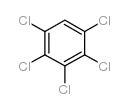
Benzene,1,2,3,4,5-pentachloro- structure
|
Common Name | Benzene,1,2,3,4,5-pentachloro- | ||
|---|---|---|---|---|
| CAS Number | 608-93-5 | Molecular Weight | 250.33700 | |
| Density | 1.609 g/mL at 25 °C(lit.) | Boiling Point | 275-277 °C(lit.) | |
| Molecular Formula | C6HCl5 | Melting Point | 84-87 °C(lit.) | |
| MSDS | Chinese USA | Flash Point | 131.6ºC | |
| Symbol |



GHS02, GHS07, GHS09 |
Signal Word | Danger | |
| Name | pentachlorobenzene |
|---|---|
| Synonym | More Synonyms |
| Density | 1.609 g/mL at 25 °C(lit.) |
|---|---|
| Boiling Point | 275-277 °C(lit.) |
| Melting Point | 84-87 °C(lit.) |
| Molecular Formula | C6HCl5 |
| Molecular Weight | 250.33700 |
| Flash Point | 131.6ºC |
| Exact Mass | 247.85200 |
| LogP | 4.95360 |
| Index of Refraction | 1.595 |
| Storage condition | 0-6°C |
CHEMICAL IDENTIFICATION
HEALTH HAZARD DATAACUTE TOXICITY DATA
|
| Symbol |



GHS02, GHS07, GHS09 |
|---|---|
| Signal Word | Danger |
| Hazard Statements | H228-H302-H410 |
| Precautionary Statements | P210-P273-P501 |
| Target Organs | Blood, Central nervous system, Liver |
| Personal Protective Equipment | dust mask type N95 (US);Eyeshields;full-face particle respirator type N100 (US);Gloves;respirator cartridge type N100 (US);type P1 (EN143) respirator filter;type P3 (EN 143) respirator cartridges |
| Hazard Codes | F,Xn,N |
| Risk Phrases | 11-22-50/53-40 |
| Safety Phrases | S41-S46-S50-S60-S61-S36/37-S24/25-S23 |
| RIDADR | UN 3077 9/PG 3 |
| WGK Germany | 3 |
| RTECS | DA6640000 |
| HS Code | 2903999090 |
| Precursor 9 | |
|---|---|
| DownStream 10 | |
| HS Code | 2903999090 |
|---|---|
| Summary | 2903999090 halogenated derivatives of aromatic hydrocarbons VAT:17.0% Tax rebate rate:9.0% Supervision conditions:none MFN tariff:5.5% General tariff:30.0% |
|
QSPR modeling of octanol/water partition coefficient for vitamins by optimal descriptors calculated with SMILES.
Eur. J. Med. Chem. 43 , 714-40, (2008) Simplified molecular input line entry system (SMILES) has been utilized in constructing quantitative structure-property relationships (QSPR) for octanol/water partition coefficient of vitamins and org... |
|
|
Determination of chlorobenzenes in water samples by solid-phase disk extraction and gas chromatography-electron capture detection.
J. Chromatogr. Sci. 52(5) , 375-82, (2014) A simple, rapid, sensitive and high throughput method is described, based on solid-phase disk extraction (SPDE) and gas chromatography-electron capture detection, for the determination of chlorobenzen... |
|
|
Contamination and emission factors of PCDD/Fs, unintentional PCBs, HxCBz, PeCBz and polychlorophenols in chloranil in China.
Chemosphere 86(3) , 248-51, (2012) The production of chloranil is regarded as a potentially significant source of unintentional POPs. This research aimed to identify the contamination levels of polychlorinated dibenzo-p-dioxins and dib... |
| MFCD00000539 |
| Pentachlorobenzene |
| EINECS 210-172-0 |
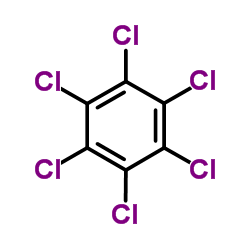 CAS#:118-74-1
CAS#:118-74-1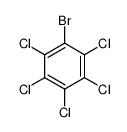 CAS#:13074-96-9
CAS#:13074-96-9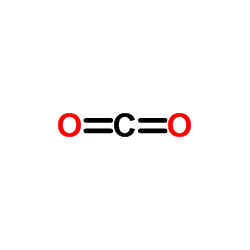 CAS#:124-38-9
CAS#:124-38-9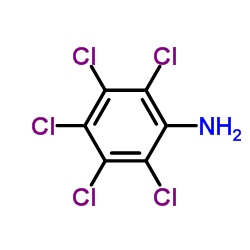 CAS#:527-20-8
CAS#:527-20-8 CAS#:98-80-6
CAS#:98-80-6 CAS#:544-92-3
CAS#:544-92-3 CAS#:108-86-1
CAS#:108-86-1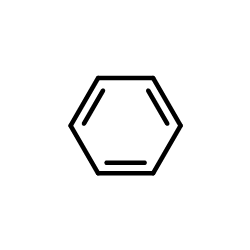 CAS#:71-43-2
CAS#:71-43-2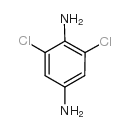 CAS#:609-20-1
CAS#:609-20-1![1,2,3,4,5-pentachloro-6-[chloro-(2,4,6-trichlorophenyl)methyl]benzene structure](https://www.chemsrc.com/caspic/459/105633-28-1.png) CAS#:105633-28-1
CAS#:105633-28-1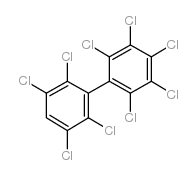 CAS#:52663-77-1
CAS#:52663-77-1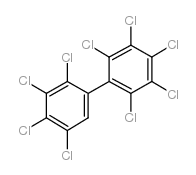 CAS#:40186-72-9
CAS#:40186-72-9 CAS#:52663-73-7
CAS#:52663-73-7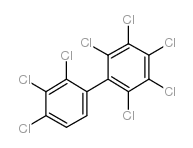 CAS#:52663-78-2
CAS#:52663-78-2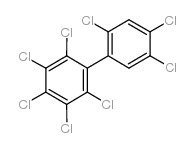 CAS#:52663-76-0
CAS#:52663-76-0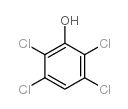 CAS#:935-95-5
CAS#:935-95-5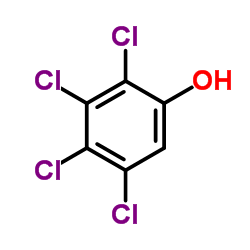 CAS#:4901-51-3
CAS#:4901-51-3 CAS#:87-86-5
CAS#:87-86-5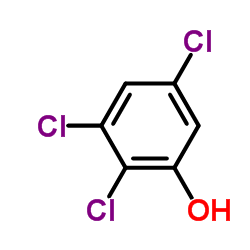 CAS#:933-78-8
CAS#:933-78-8
